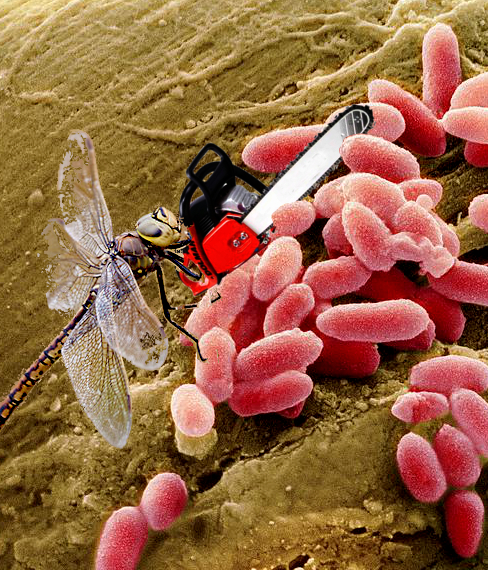Dragonflies spied as anti-bacterial provider
 Australian researchers have looked to the great repository of innovation for their latest creation – pinching designs from nature to create exciting new materials.
Australian researchers have looked to the great repository of innovation for their latest creation – pinching designs from nature to create exciting new materials.
A team has investigated the bacteria-killing potential of black silicon, hoping to develop nano-structured antibacterial materials.
Black silicon is silicon which has been etched to create long narrow protrusions on along its surface on a nano-scale. The incredibly small surface structure variations are quite common in the natural world.
The investigation was launched after a related project by microbiologist Professor Elena Ivanova and Dean of Swinburne University's Faculty of Life and Social Sciences, Professor Russell Crawford.
The pair discovered that the wing of the cicada Psaltoda claripennis is able to shred certain bacteria, using a process which comes from the wings’ physical structure.
“Based on this discovery, we investigated other insects that may possess similar surface architectures that might kill more bacteria, in particular the deadly strains of the Staphylococcus aureus or golden staph bacterium,” Professor Ivanova said.
Further searching led to the wings of the Wandering Percher dragonfly, whose spiky nano-structure kills even more forms of bacteria.
The latest project, published in the journal Nature, mimics the structure of the antibacterial wings, to decode their bug-fighting ability.
A team comprised of researchers from several prominent universities has demonstrated that both dragonflies create a spike-like structure with clusters of neighbouring nano-protrusions.
“This structure generates a mechanical bacteria killing effect which is unrelated to the chemical composition of the surface,” Professor Crawford said.
“Both surfaces were found to be highly effective against a range of bacteria, as well as endospores. They exhibited estimated average bacteria killing rates of up to 450,000 cells per minute of exposure, for every square centimetre of available surface.
“This represents an exciting prospect for the development of a new generation of antibacterial nano-materials that could be applied to the surfaces of medical implants, making them far safer,” he said.








 Print
Print